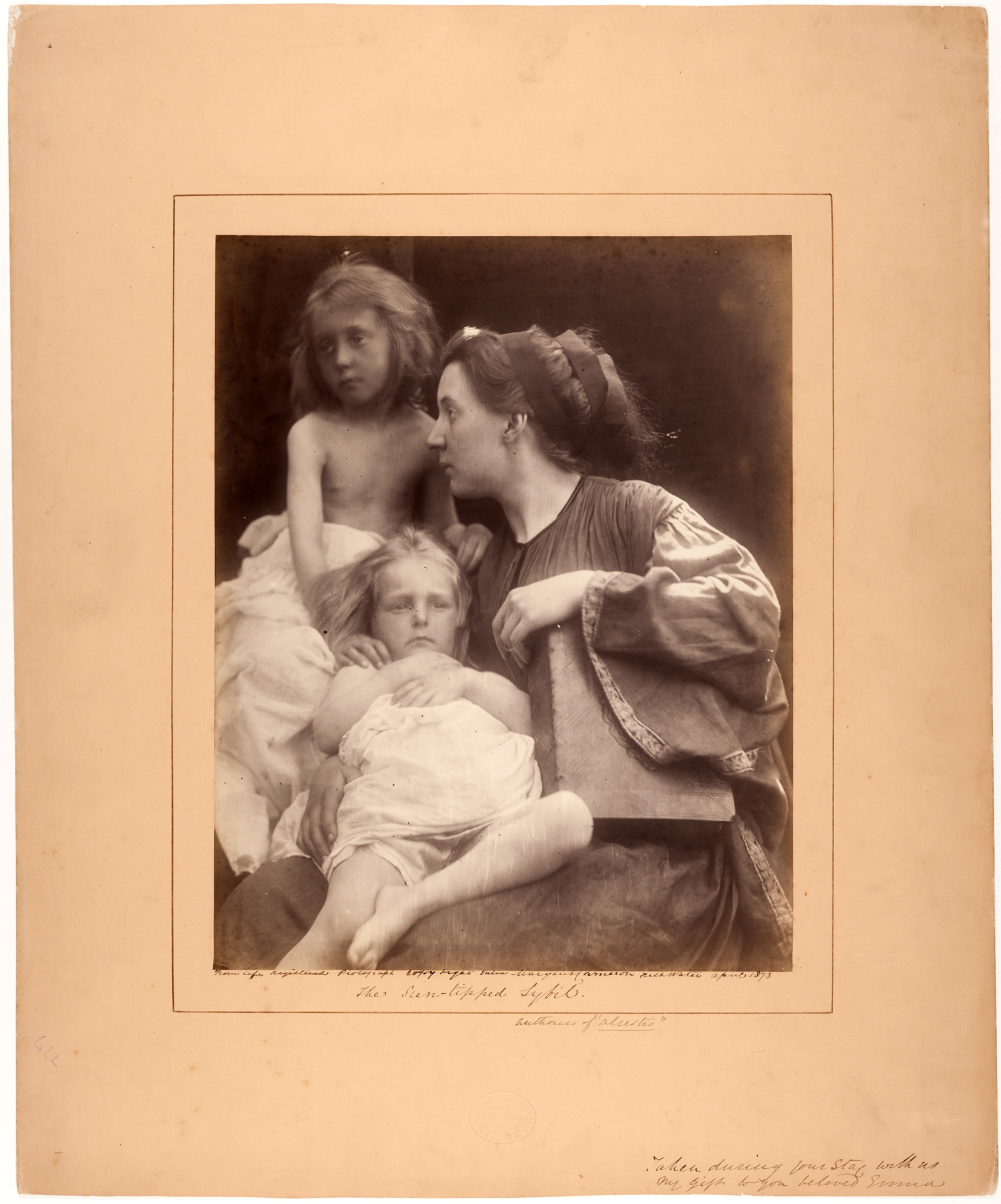Week 3 - 2016

Julia Margaret Cameron, The Sun-tipped Sybil, 1873. Property of the Preus Museum collection.
Slow shutter
Julia Margaret Cameron died 26 January 1879 at 64. She left a legacy that has inspired many later photographers and artists.
She began her career late. Her first camera came as a gift when she was a forty-eight-year-old mother of six grown children. She was well-read, deeply religious, and the friend of many Victorian poets, artists, and intellectuals who became models in her portraits. She avoided conventional portraiture, staging historical and mythological themes. At the time the prevailing photographic process, negatives on glass plates (collodion wet plates), made sharp, richly detailed images possible. Cameron went in the opposite direction. She sought the blurred, the dreamlike, the ethereal. Long shutter openings made it possible for the small movements of those being portrayed to give motion and life to the images.
It was no simple task to be a model for Cameron – or "victim," as her models were also called. One of them tells about sitting still a long time for a harshly demanding photographer. After one minute the model wanted to scream, after two minutes it felt as if her eyes were coming out of her head, after three minutes her neck was paralyzed, after four minutes the crown that had been placed on her head began to slide down her forehead, and after five minutes she collapsed in a convulsion of laughter with Cameron's husband.
Maybe it's not so strange that the little girl in the picture doesn't seem as spiritually uplifted as her fellow models.
V&A (Victoria and Albert Museum, London) has made a little presentation of Cameron:




